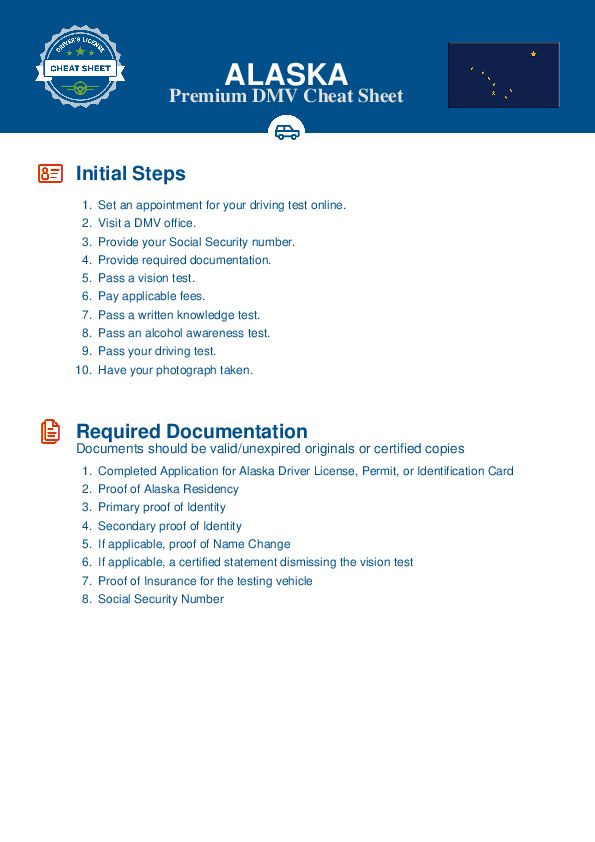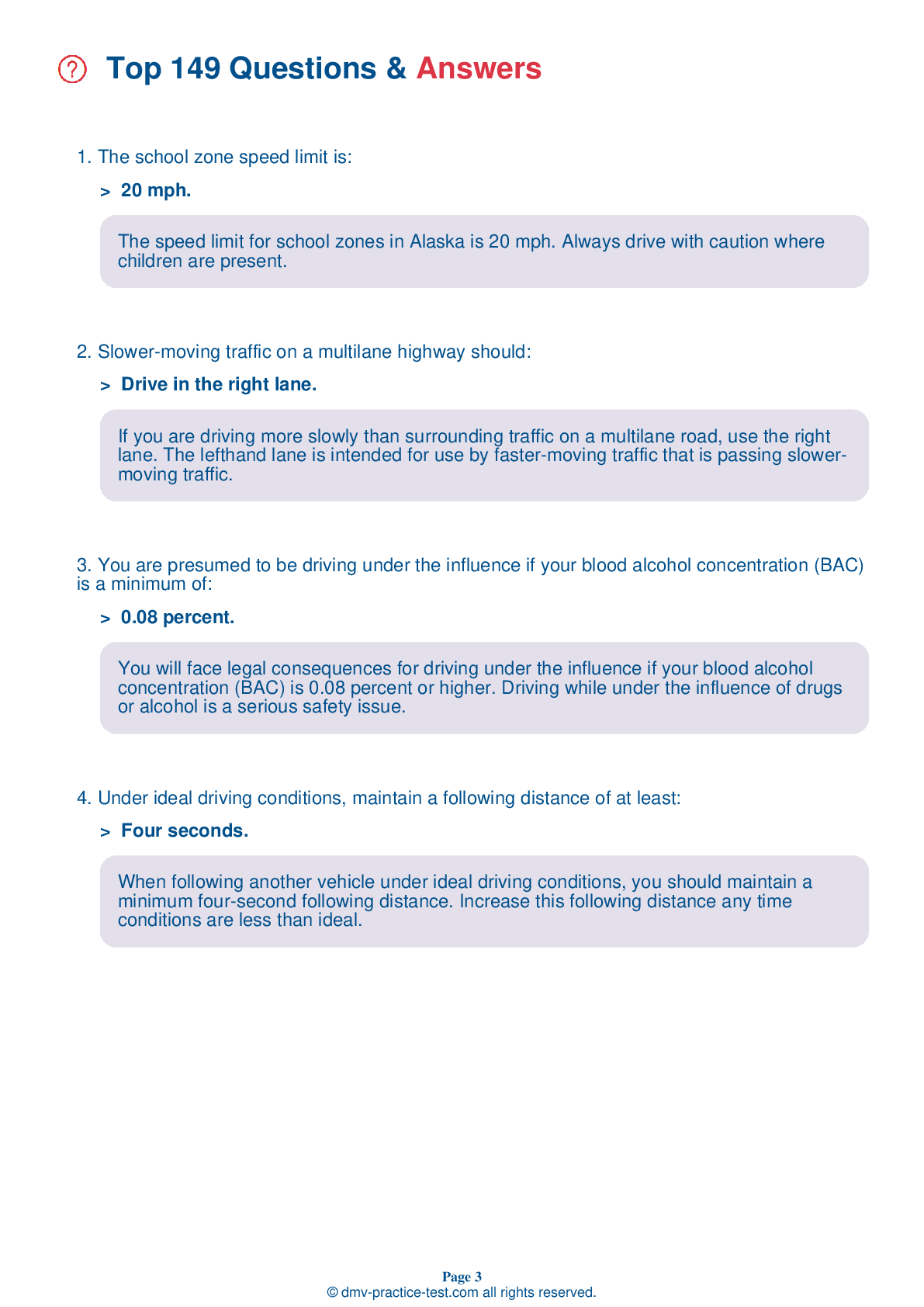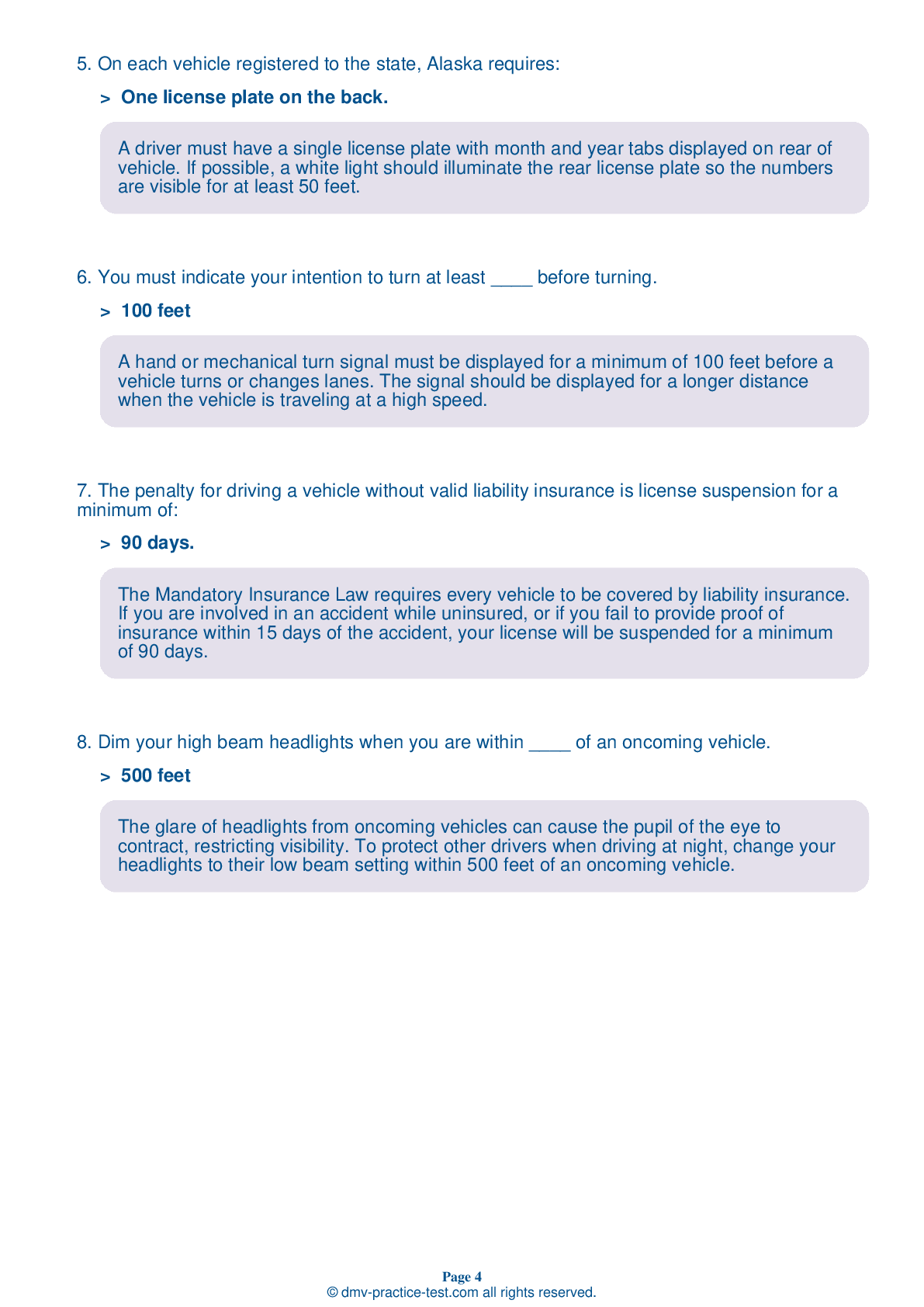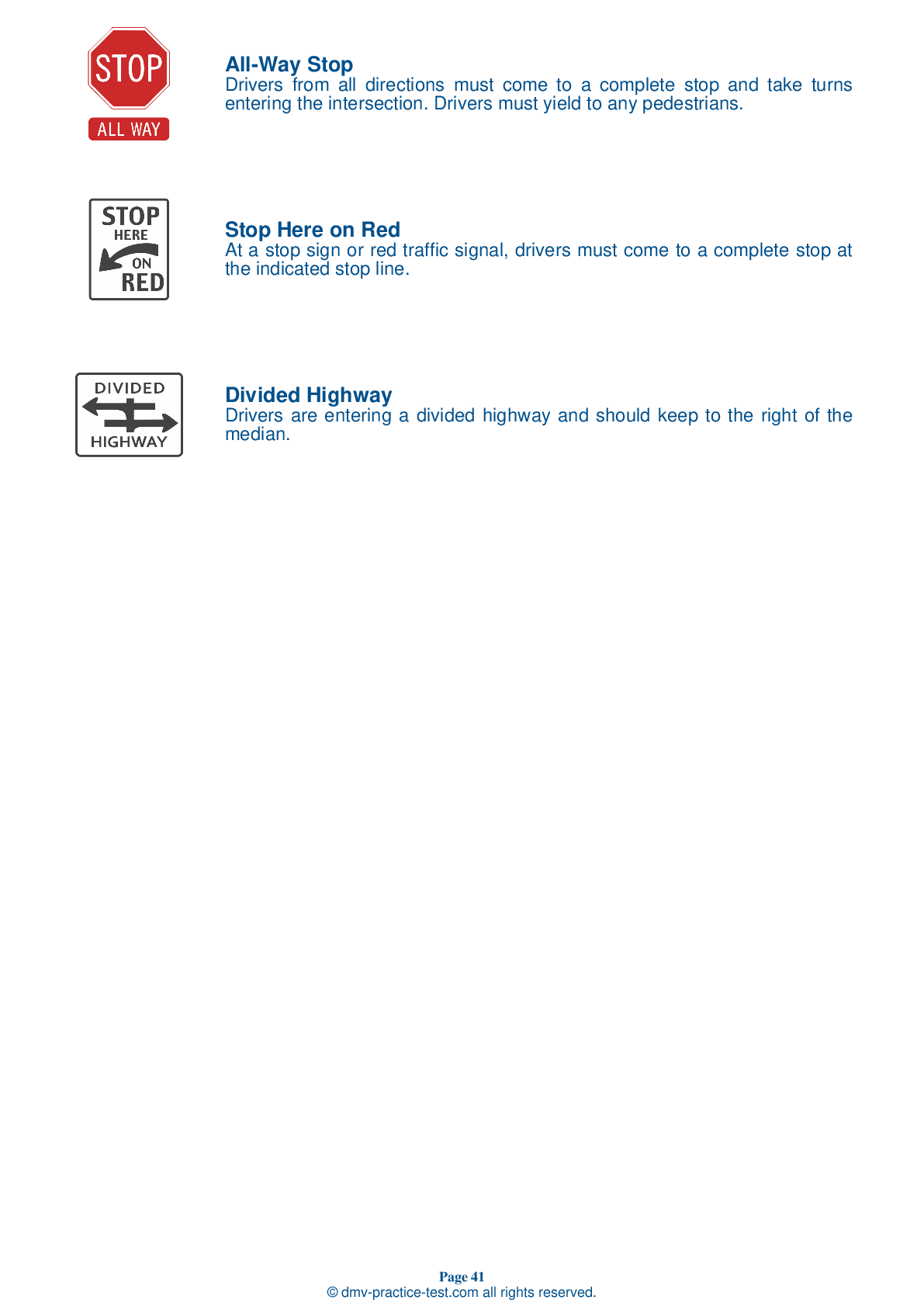FREE Alaska DMV Practice Test #9 Page 2 of 3
This Alaska DMV practise tests has just been updated for January 2025. It contains questions based on the most essential traffic signs and limitations from the Alaska Driver Handbook for 2025. Use actual questions that are very close (often identical!) to the DMV driving permit test and driver's licence exam to prepare for the DMV driving permit test and driver's licence exam.
To help you recall the topics, each practise test question includes a suggestion and explanation. The written component of the official DMV test will include questions about road rules, traffic signs, and driving statutes, as well as information from the Driver Handbook.
To get the required passing mark, you must correctly answer 16 out of 20 questions. Take our DMV practise exam to help you prepare for your Alaska instruction permit or driver's licence.
The DMV exam is available in multiple languages.
Using any form of testing aid will result in an automatic failure, and the DMV may take further action against your driver's licence, so don't do it.
7 . You are driving up a hill and are approaching a heavy truck from the rear. You should know that:
Drivers must be aware that large vehicles often travel at a speed slower than the posted speed limit, especially when driving on an incline, and should use caution when approaching a large vehicle from the rear. When on a hill with limited visibility, it is unlawful to pass another vehicle.
8 . To keep your vehicle from being struck from behind:
It is a good idea to match the pace of surrounding traffic, within the legal speed limit. Driving with the flow of traffic keeps traffic moving and helps prevent rear-end collisions.
9 . You may drive across a dashed white line:
Traffic lanes moving in the same direction are separated by broken white lines. You may cross over dashed lines to pass, if it is safe to do so.
10 . What should you do if your vehicle’s right wheels leave the pavement?
If your vehicle’s right wheels leave the pavement, don't panic. Take your foot off the accelerator and steer parallel to the road. Slow down and ease back onto the roadway by keeping both hands on the steering wheel and steering into the road’s right lane with a small turn of the steering wheel. Check for traffic around you before steering back onto the pavement.
11 . Your body gets rid of approximately:
The average person’s body will process about one alcoholic drink in one hour. However, many factors play a part in determining how impaired a person will become when consuming alcohol, including the amount of alcohol consumed, how fast it is consumed, and a person’s body weight, food intake, and general health.
12 . Refusal to submit to chemical testing when requested by law enforcement:
Refusal to submit to chemical testing will result in two criminal charges: Driving Under the Influence (DUI) and Refusal. These charges may be treated separately in court. If you refuse to take a chemical test, the DMV is required to revoke your driving privileges and 10 points will be added to your license.
13 . Driving at night requires increased caution because:
Because it is dark, drivers cannot see as well at night as they can during the day. From one half hour after sunset until one half hour before sunrise, or at any other time when persons or vehicles are not visible for 500 feet, drivers must use their headlights.
Need Car Insurance? No problem!
Compare the best rates in Alaska and find a personalized policy that meets your needs.
1. Are You Currently insured ?
2. Married ?
3. Do you own your Home?
4. Do you have more than 1 car ?
5. Have you or a Family Member Honorably Served in U.S. Military ?
6. Your Name
7. Age
8. Zip code
IMPORTANT REMINDER:Auto Insurance is Mandatory to drive in Alaska. Get covered before you hit the road to avoid any fines.
Ranked by best match



